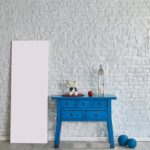Are you looking to transform your home with a touch of elegance and style? In this article, we will show you how to decorate your home with a fabric palette, adding warmth and personality to every corner. A fabric palette is a selection of fabrics that work together harmoniously to create a cohesive look in your home decor. This concept is essential in creating visually pleasing and well-coordinated spaces that reflect your taste and personality.
When it comes to choosing the right fabrics for your home, factors such as color, texture, and pattern play a crucial role. Selecting fabrics that complement each other and blend seamlessly with your existing furniture and decor can make all the difference. In the following sections, we will provide you with useful tips on how to choose the perfect fabrics for each room in your home, ensuring that they enhance the overall aesthetic appeal.
Establishing a color scheme using fabrics is key to achieving a cohesive look in your home decor. By selecting a color palette that reflects your personal style and preferences, you can create a sense of harmony throughout your living space.
Whether you opt for bold and vibrant colors or subtle neutral tones, incorporating them strategically through fabrics can elevate the visual appeal of any room. Stay tuned as we delve deeper into creating a harmonious color scheme using fabrics in the upcoming sections.
Choosing the Right Fabrics
When it comes to decorating your home with a fabric palette, choosing the right fabrics is essential in creating a cohesive and visually appealing space. Here are some tips to help you select the perfect fabrics based on color, texture, and pattern:
- Color: Consider the overall color scheme of your home and choose fabrics that complement or contrast with existing colors. If you prefer a monochromatic look, opt for different shades of the same color family. For a more eclectic style, mix and match bold colors.
- Texture: Incorporating different textures adds depth and interest to your decor. Mix smooth fabrics like silk or satin with textured ones like velvet or tweed for a balanced look. Additionally, consider the feel of the fabric – soft fabrics work well for upholstery while durable ones are ideal for high-traffic areas.
- Pattern: When choosing fabric patterns, think about the scale and proportion within your space. Mix large-scale patterns with smaller ones for visual contrast. To create cohesion, stick to a consistent theme throughout your home – whether it’s florals, stripes, or geometric prints.
By paying attention to these factors, you can create a fabric palette that reflects your personal style and enhances the overall aesthetic of your home. Experiment with different combinations until you find what works best for each room.
Remember that fabric choices impact not only the appearance but also the feel of a space – so don’t be afraid to mix and match different fabrics to achieve the desired look. Whether you prefer a cozy atmosphere with plush textures or a modern vibe with sleek materials, there are endless possibilities when it comes to decorating with fabrics.
Incorporating a variety of fabrics in your home allows for versatility and can easily be switched out seasonally or as your tastes change. Invest in quality fabrics that not only look good but also stand the test of time with proper care and maintenance. Ultimately, have fun experimenting with different fabric combinations to create a personalized and inviting space that truly feels like home.
Creating a Color Scheme
When it comes to decorating your home with a fabric palette, creating a cohesive color scheme is essential for achieving a harmonious look. By carefully selecting fabrics that complement each other in terms of color, you can tie together the different elements of your home decor for a polished and coordinated appearance. Here are some tips on how to establish a cohesive color palette using fabrics:
Consider the Mood
Before choosing fabrics for your home decor, think about the mood you want to create in each room. Soft pastel colors like light blues and blush pinks can evoke a sense of tranquility and serenity, while bold and vibrant colors like emerald green or royal blue can add energy and drama to a space.
Choose a Dominant Color
Start by selecting one dominant color that will serve as the primary hue in your color scheme. This could be the color of your walls, furniture, or any other major element in the room. Once you have established this base color, you can then select complementary fabric colors that enhance and accentuate the dominant shade.
Layer Textures and Patterns
To add depth and visual interest to your space, consider incorporating fabrics with different textures and patterns. Mix smooth silk with cozy velvet or geometric prints with floral motifs for a dynamic and layered look. Just make sure to balance out bold patterns with more subtle ones to avoid overwhelming the space.
By following these tips on creating a cohesive color scheme using fabrics, you can transform your home into a stunning showcase of style and elegance. Whether you prefer a monochromatic palette for a minimalist aesthetic or a mix of vibrant hues for a more eclectic vibe, experimenting with different fabric colors and textures is key to achieving a beautifully decorated space that reflects your personal taste and personality.
Mixing and Matching Patterns
One key tip for mixing patterns is to vary the scale of the prints. Choose one large-scale pattern, one medium-scale pattern, and one small-scale pattern to create a well-balanced look. This variation in scale helps to prevent the patterns from competing with each other and allows them to complement each other instead. For example, pair a large floral print with a small geometric print for an interesting mix.
Another important factor to consider when mixing patterns is the color scheme. Select patterns that share at least one common color to tie them together cohesively. This shared color will help create a unified look throughout the room while still allowing each pattern to stand out individually. Additionally, you can choose one dominant pattern as the focal point and use other patterns as accents to add depth and interest.
To avoid overwhelming your space with too many competing patterns, make sure to incorporate solids or neutral fabrics as well. These solid fabrics act as a visual break between different patterns and provide balance in the overall design. For example, if you have boldly patterned drapes, balance them out with solid-colored throw pillows or upholstery on furniture pieces in the same room.
By following these tips on mixing and matching patterns effectively, you can create a visually appealing and harmonious space that reflects your personal style. Experiment with different combinations of fabrics until you find a combination that works best for your home decor needs.
| Key Tip for Mixing Patterns | Vary the Scale of Prints |
|---|---|
| Important Factor | Consider the color scheme |
| Avoid Overwhelming Space: | Incorporate solid or neutral fabrics |
Using Fabrics in Different Spaces
Fabric is a versatile material that can be used to add warmth, texture, and visual interest to any space in your home. When it comes to decorating with a fabric palette, each room presents unique opportunities for incorporating fabrics in different ways. In the living room, consider using throws, accent pillows, and curtains to introduce color and softness. Bold patterns or rich textures can make a statement in this communal space.
In the bedroom, focus on creating a cozy and inviting atmosphere with the right fabrics. Opt for luxurious bedding sets, decorative bed runners, or even upholstered headboards to elevate the look of your bedroom. Fabrics like velvet or silk can add a touch of elegance, while cotton or linen are ideal for a more relaxed feel.
When it comes to the kitchen, think about using fabrics in unexpected ways to bring charm and personality to this functional space. Consider adding fabric window treatments, chair cushions, or table runners to inject color and style into your kitchen decor. Mixing and matching different fabrics can create a dynamic look that reflects your personal taste and adds visual interest.
| Room | Ideas for Incorporating Fabrics |
|---|---|
| Living Room | Throws, accent pillows, curtains |
| Bedroom | Bedding sets, bed runners, upholstered headboards |
| Kitchen | Window treatments, chair cushions, table runners |
DIY Fabric Projects
When it comes to decorating your home with a fabric palette, incorporating DIY fabric projects can add a personal touch and unique flair to your space. Whether you are looking to spruce up your living room, bedroom, or even kitchen, there are countless ways to use fabrics in creative and fun ways. Here are some ideas for DIY fabric projects that will help you personalize your home decor:
- Create custom throw pillows by sewing together different fabric patterns and textures. You can mix and match colors and designs to complement your existing furniture or add a pop of color to neutral spaces.
- Make a statement wall hanging using fabric scraps or remnants. This can be a fun way to showcase your favorite fabrics while adding visual interest to any room in your home.
- Sew your own curtains or window treatments using colorful or patterned fabrics. This allows you to easily change up the look of a room without committing to permanent changes like painting walls.
In addition to these projects, you can also consider making fabric-covered storage bins, table runners, or even reupholstering old furniture pieces with fresh new fabrics. The possibilities are endless when it comes to DIY fabric projects for home decor. Not only are these projects budget-friendly, but they also allow you to express your creativity and style in a personalized way.
Whether you are an experienced crafter or just starting out with DIY projects, decorating your home with a fabric palette can be both enjoyable and rewarding. By adding handmade fabric elements to your space, you can achieve a cohesive and stylish look that reflects your unique personality and taste. So gather your favorite fabrics, grab some basic sewing supplies, and get started on creating personalized decor items that will make your house feel like a home.
Fabric Care and Maintenance
Gentle Cleaning Methods
When it comes to caring for your fabric items, one of the most important aspects is using gentle cleaning methods. Depending on the type of fabric, you may need to hand wash certain pieces or use a delicate cycle in your washing machine.
Be sure to read and follow the care instructions provided by the manufacturer to avoid damaging your fabrics. For tougher stains, spot cleaning with a mild detergent or taking your items to a professional cleaner may be necessary.
Proper Storage Techniques
Proper storage techniques can also help extend the life of your fabric items. When not in use, consider storing them in a cool, dry place away from direct sunlight to prevent fading and discoloration. Fabric items such as decorative pillows or throws can be stored in airtight containers to protect them from dust and moisture. Additionally, hanging curtains or drapes when not in use can help prevent wrinkles and maintain their shape.
Regular Maintenance Routine
Regular maintenance is key to ensure the longevity of your fabric items. This may include vacuuming upholstered furniture regularly to remove dust and debris, rotating cushions to prevent uneven wear, and fluffing pillows to maintain their shape. For curtains and drapes, periodically check for any signs of damage or wear and make any necessary repairs promptly. By staying proactive with your maintenance routine, you can keep your fabric items looking like new for years to come.
By incorporating these tips into your fabric care and maintenance routine, you can ensure that your fabric items remain in pristine condition and continue to add beauty and comfort to your home decor. Remember that proper care not only extends the life of your fabrics but also helps preserve their color, texture, and overall quality.
So whether you have luxurious velvet cushions or simple cotton curtains, taking care of them properly will allow you to enjoy them for many years to come while maintaining a cohesive fabric palette throughout your home.
Final Tips and Tricks
In conclusion, decorating your home with a fabric palette can truly transform your living spaces into vibrant and stylish retreats. By choosing the right fabrics that match your color scheme, texture preferences, and overall aesthetic, you can create a cohesive look that ties the room together. Remember to mix and match patterns strategically to add visual interest without overwhelming the space.
One of the key aspects of successfully decorating with a fabric palette is to use fabrics in different spaces throughout your home. From the living room to the bedroom and even the kitchen, incorporating textiles in various ways can instantly elevate the design of each room. Whether it’s through throw pillows, curtains, upholstery, or even wall hangings, fabrics add warmth and personality to any space.
To further enhance your fabric-centric decor, consider engaging in some fun DIY fabric projects. Personalizing your home decor with handmade items not only adds a unique touch but also allows you to showcase your creativity.
And don’t forget about proper fabric care and maintenance – by following the recommended guidelines for cleaning and preserving your textiles, you can ensure their longevity and keep your home looking fresh and inviting for years to come. Embrace the versatility of fabrics in decorating and unleash your creativity in making your home a true reflection of your style.
Frequently Asked Questions
How Do You Use Fabric for Home Decor?
Fabric can be used for home decor in various ways, such as making curtains, throw pillows, tablecloths, and upholstery. The choice of fabric can greatly influence the overall look and feel of a room, adding texture, color, and pattern to complement the existing decor.
How Do You Decorate With a Color Palette?
Decorating with a color palette involves selecting a cohesive combination of colors that will tie the room together. This can be achieved by choosing a main color as the base and then incorporating complementary or contrasting colors through accessories like rugs, artwork, and throw pillows. Consistency in the color scheme helps create a harmonious atmosphere.
How Do You Decorate Walls With Fabric?
Decorating walls with fabric is a creative way to add warmth and texture to a room. One popular method is using fabric as wall tapestries or hangings to create a focal point.
Alternatively, fabric can be stretched over canvas frames to create unique artwork or even framed in embroidery hoops for a charming touch. The possibilities are endless when it comes to using fabric on walls!

I’m thrilled to be your companion on this exciting journey through the world of home decor and design. With a passion for turning houses into homes and a keen eye for the finer details, I’m here to help you transform your living spaces into beautiful, functional, and meaningful havens.





